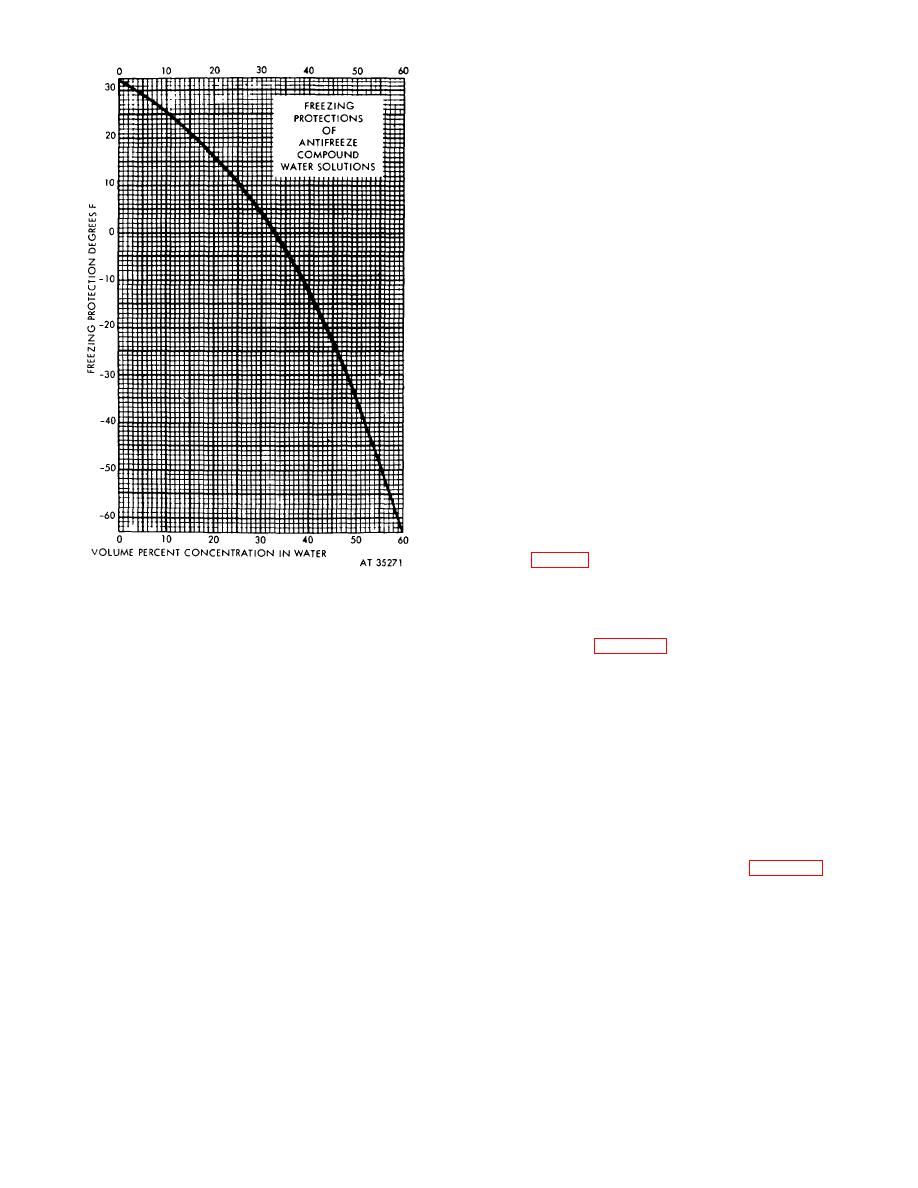 |
|||
|
|
|||
|
Page Title:
Properties of Antifreeze Solution |
|
||
| ||||||||||
|
|
 solution than when using water. However, 100 percent
concentrated antifreeze compound has a boiling point far
above safe operating temperatures for water-cooled
engines and should not be used for coolant except with
water added.
Alcohol antifreeze solutions boll at
temperatures below the boiling point of water.
(3) Evaporation. Loss of freezing protection from
evaporation is no problem In antifreeze solutions.
Practically all coolant losses are leakage and overflow
losses of liquid, and the only way that freezing protection
of the solution can be lost is through adding water.
(4) Foaming of coolant. Some natural waters have a
greater tendency to foam than others, due to minerals or
impurities contained in them. Contamination of antifreeze
solution or aging of solution from extended service
increases foaming tendencies. Foaming condition of
coolant does not mean a head of foam on the surface of
the coolant in the radiator, but refers to small air bubbles
which are caught and held in the body of the coolant,
giving coolant a milky appearance and increasing its
volume.
(5) Coolant leakage. The leakage rate of inhibited
antifreeze solutions is no more than that of water, although
it may appear to be more. The explanation for the
appearance of more wetness at small leaks with the
antifreeze solution is that antifreeze compound evaporates
more slowly than water. Leakage difficulties with either
water coolant or antifreeze solution can be avoided only by
proper attention to preventive maintenance leakage
services (figs 2-2, 2-8, and 2-9).
(6) Chemical Properties.
While water itself is
Figure 2-27. Relation between concentration of antifreeze
chemically very stable, it attacks certain cooling system
compound in solution and freezing protection of solution.
metals quite vigorously under the influence of heat and
aeration, conditions constantly present during cooling
b. Properties of Antifreeze Solution. Some of the
system operation (para 2-16). To protect the system from
differences between antifreeze solution and water have a
corrosion, it is necessary to use corrosion inhibitor in water
bearing on cooling system preventive maintenance.
coolant Inhibitors already contained In antifreeze
(1) Freezing point. Adding 60 percent antifreeze to
compound have two purposes.
40 percent water lowers the freezing point of water in
(a) They prevent the corrosive attack of water used
proportion to amount added until the lowest possible
in preparing solution.
freezing protection, -62F, is reached. Solutions which
(b) They prevent deterioration of the antifreeze
contain more than 60 percent antifreeze compound give
compound, so that the solution remains noncorrosive for
less protection.
at least one winter's use under average operating
conditions.
NOTE
When preparing antifreeze solutions, current
solutions is practically all water. Losses of solution from
directives should be consulted.
the cooling system by evaporation are negligible as
compared to other causes of coolant loss (para 2-28f).
(2) Boiling Point The addition of antifreeze
d. Heat Transfer Antifreeze solutions have slightly
compound to water raises the boiling point of the coolant.
less ability to carry away heat than water However,
A solution containing one-third antifreeze compound,
protecting to 0 F, has a boiling point of 220 F as
compared to 212 F for water, and a 60 percent solution
boils at 231 F. Cooling systems can therefore operate at
higher temperatures without boiling when using antifreeze
2-25
|
|
Privacy Statement - Press Release - Copyright Information. - Contact Us |